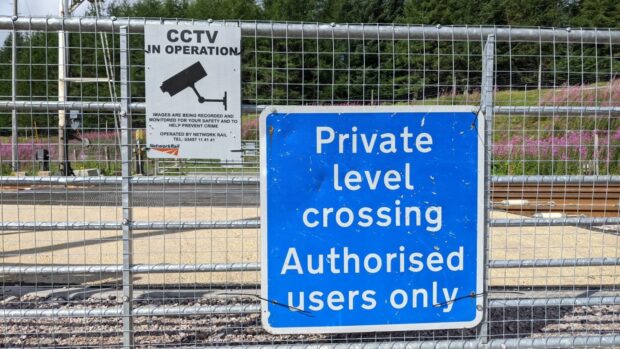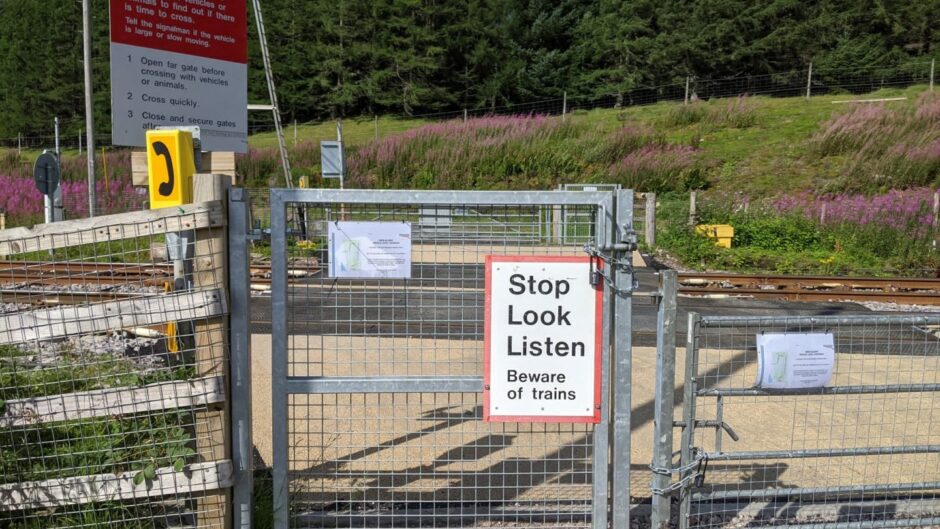A Scottish charity is calling on Network Rail to reinstate access to a remote level crossing.
Residents in Dalwhinnie were furious when the gates to Ben Alder level crossing were locked last July.
The crossing, which lies south of the Dalwhinnie station on the Highland main line, forms part of an historic route from Loch Rannoch and along Loch Ericht to Dalwhinnie.
It is commonly used by residents, hillwalkers and cyclists to reach Ben Alder, the highest peak in the remote area of the Scottish Highlands.
Despite its popularity, Network Rail took the decision to restrict access to prevent further unsafe use of the crossing.
Campaigners and politicians criticised the move, due to the lack of consultation with local residents.
More than 9,000 people signed a petition in opposition, but their plight failed to sway rail bosses in their decision.
Representatives from ScotWays – The Scottish Rights of Way and Access Society – have now issued a fresh appeal in the hope of finding a “safe way to reopen the crossing.”
Chief operating officer Richard Barron said the decline in footfall along the route has had a detrimental impact on local traders.
“This disappointing move by Network Rail flies in the face of Scotland’s access rights,” he said.
“There was inadequate consultation with the community before the closure and the suggested diversion half a mile down the track was poorly thought out, inadequately signed, and makes the safety situation worse rather than better.
Restricting Scots right of access
“In addition to deterring visitors, which is impacting on local businesses, the closure means that local people have lost access to the countryside yards from their homes.
“ScotWays and others are calling on Network Rail to find a safe way of reopening the crossing.”
The charity has launched a new questionnaire as part of their ongoing campaign.
The survey will aim to gather more information on the long-standing public use of the crossing.
ScotWays is asking all members of the public, who used the crossing as part of a long-distance through route, to lend their voice to campaign.
Mr Barron added: “We have launched a questionnaire to gather information on public use of the rights of way heading west from Dalwhinnie to help in the campaign to get Network Rail to reopen the crossing.
“We’ve much historical documentation and now we’re turning our attention to how the rights of way have been used within living memory.
“Through the questionnaire we hope to gather additional information regarding long-standing public use and its value to the local community and visitors alike.”
Network Rail Scotland director of safety Innis Keith said closing the crossing was the only viable option to maintain safety on the route.
He said: “The closure of Ben Alder railway Level Crossing was a safety decision. Network Rail was required to take this course of action to prevent further unsafe use of the level crossing.
“We are aware of local frustration around this decision, but safety must be our priority and rapid closure of the crossing was the only workable option available to deal with the risk posed.”













Conversation